Need to Know: 4 engineering upgrades to the Bay Bridge
On this week's "TechKnow," contributor Marita Davison travels to the San Francisco Bay Area to explore the new San Francisco-Oakland Bay Bridge.
The bridge sits directly between two of California's major faults, the San Andreas Fault to the west of the bay, and the Hayward Fault to the east. Due to the constant threat of major earthquakes, designers on the new bridge engineered several components to minimize damage from seismic activity.
Here's what you need to know:
1. Crumple zones absorb kinetic energy
Crumple zone technology has been used for years in automotive manufacturing, utilizing “crush space” to absorb kinetic energy during a collision and minimize impact on the passengers.
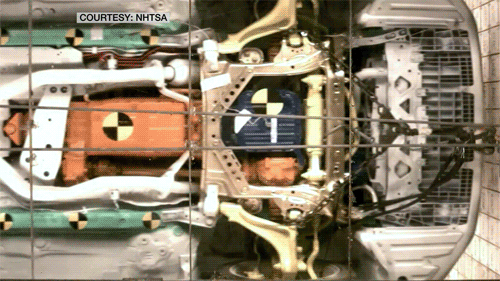
Crumple zones on the new San Francisco-Oakland Bay Bridge are designed to absorb energy during earthquakes through controlled deformations. Engineers say the new bridge won’t collapse, even in a powerful quake.
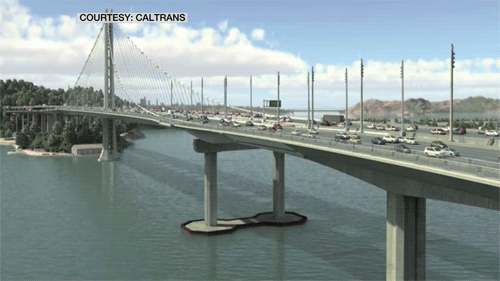
“The safest place [to be during a quake] would be on top of the tower of this bridge,” says Marwan Nader, a Bay Bridge architect who was a grad student at UC Berkeley during the 1989 Loma Prieta earthquake, in which a 50-foot section of the original bridge collapsed. “It would be one heck of a joyride, but it would be safe.”
2. Shear link beams increase flexibility
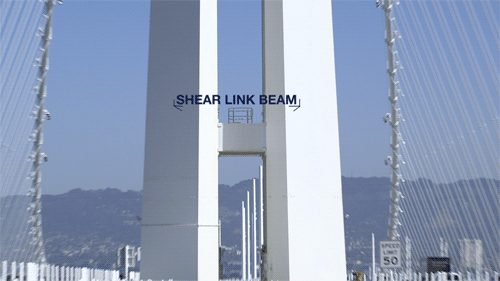
Inside the 525-foot tower on the self-anchored suspension bridge, the shear link beams can absorb energy by bending and deforming during an earthquake.
“The shear link beam is the heart and soul of how we made the single tower work,” Nader explains. “Those link beams actually reduce the forces that go onto the bridge.”
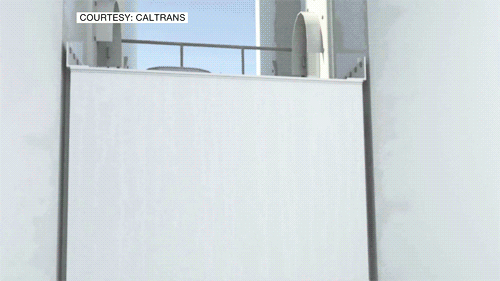
The shear link beams also allow the tower’s four legs to move independently, which releases even more energy. This idea of maximizing flexibility is crucial to minimizing an earthquake’s impact on the new bridge.
“The stiffer the structure, the more rigid it is, the more force the earthquake applies on it,” Nader says. “The more flexible the structure is, the less forces go into it.”
3. Hinge-pipe beams move horizontally to prevent structural damage
“[The hinge-pipe beam] is basically a big steel dowel,” explains Caltrans employee Andrew Gordon. “This is one of those sacrificial elements where we want this to be damaged in order to protect the bridge deck itself.”

Twenty of these hinge-pipe beams are strategically placed in the heart of the bridge, high above the Bay, but still below traffic. In the event of an earthquake, the hinge pipe beams move horizontally, “like an accordion,” Gordon says. This movement displaces energy from the quake that would otherwise cause structural damage. The hinge-pipe beams are also designed to be easily replaceable when damaged.
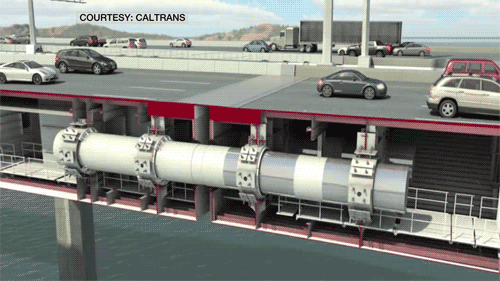
“That’s where the seismic energy is going to be concentrated, so by designing sections of the bridge to fail, that will protect the more structural elements,” says Gordon. “After an earthquake, workers can go up, inspect them, determine if there is any damage. If there is, it can be repaired or cut out and replaced.”
4. Battered piles allow lateral movement
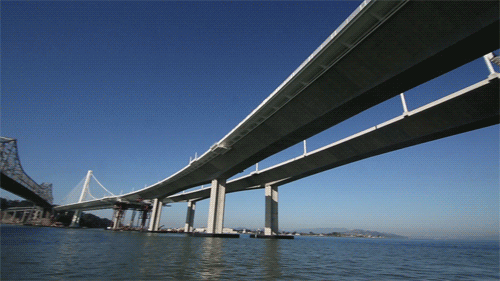
Battered piles are new to bridges but have been used for years to stabilize oil rigs that sit in the middle of the ocean. One hundred and sixty of them stretch down from the base of the new bridge deep into the Bay, standing at an angle to allow more lateral movement and energy displacement during a quake. At 8.5 feet in diameter and 300 feet long, the battered piles give the new Bay Bridge even more stability during an earthquake.

To learn even more about preventative earthquake engineering on the new Bay Bridge, watch "TechKnow," Sunday 7:30ET/4:30PT.
Error
Sorry, your comment was not saved due to a technical problem. Please try again later or using a different browser.